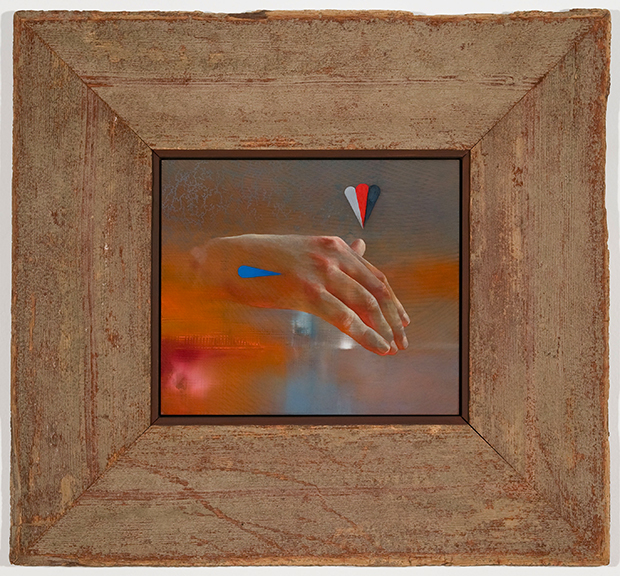
The current exhibition at Beers Contemporary, The Fantasy of Representation, combines emerging painters with familiar masters in a show that celebrates the representational and figurative strand of contemporary art.
Curated by Andrew Salgado, the exhibition argues that figuration, the painting of things, can be as inventive and avant-garde as any example of abstraction (the painting of forms, shapes and colours). Here Salgado displays the work of some 20 artists, and his own, in support of his argument.
In the accompanying essay Salgado writes against the assumption that although representational painters should be influenced by abstraction, abstraction has no responsibility to take on the lessons of those painters who paint objects, people and landscapes.
The art historian Edward Lucie-Smith notes in support that abstract work can be just as predictable and tiresome as any picture of a river or tree. They are right, of course, and it is unjust to assume that just because an artist chooses to include representational content in their work that it is less advanced or adventurous than the work of an abstract painter.

The combination of the techniques of abstraction with carefully chosen subject matter and recognisable references has produced some of the most interesting work of the 20th and 21st century. This point is explicitly made by the inclusion of a Francis Bacon sketch on paper (Head Drawing), a distended head that illustrates exactly how engaging the balance between technique and content can be.
The material qualities of the paintings on show are one of the most immediately striking aspects of the exhibition, and it is fascinating to examine the craters, peaks and thickness of the paint. Looking into the Sun (Kings Blue) (2015) by Daniel Crews-Chubb is such a dense lather of materials pasted to the canvas that I found myself staring at it for quite some time.
But somewhat ironically for a show on representation, the content of the painting barely registered over its material qualities. This is the Achilles heel of the exhibition, and perhaps even of modern representational painting in general.

Often the content (what the painting is of) is really quite boring. Doe-eyed women, topless men with a far-away stare in their eyes, the light on a lake – these things feel overdone and far less interesting than how they are painted or exist as objects. Surely truly great representational work, like Bacon’s, exists in the interaction between what is represented and how it is portrayed.
Too much of the work here falls down at the level of content. The clumsy religious theme in Sverre Bjertnes’ The New State (2015), for example, is so overdone that it becomes very difficult to appreciate the skill involved in his painterly technique. Its Hieronymus Bosch-esque landscape, with flat and stretched purple hills cluttered with crucifixes, had me questioning what I could possibly be expected to draw from it. Haven’t I seen these images of psychedelic and unsettling Christianity a hundred times before? What the paintings are of often feels secondary or superficial when comparison to how they are painted.
I think that some of this triteness stems from the unwavering focus on gallery painters, when there is all around us (especially in East London) much more interesting representational work. Walking to the exhibition, I passed street art that I found more poignant, political and urgent than many of the canvases on display. Despite the small size of the exhibition, it could have included so much more that engages exactly with those concerns it identifies – the way that representation can be just as (or even more) current than abstraction.
For all that the exhibition does correctly, and the interesting work it includes, it strays into cliché at points, and rarely looks outside the walls of the gallery or the cliquish art world, towards work that might be just as able to challenge the supremacy of the abstract.
The Fantasy of Representation is at Beers Contemporary, 1 Baldwin Street, EC1V 9NU until 19 September
beerslondon.com
